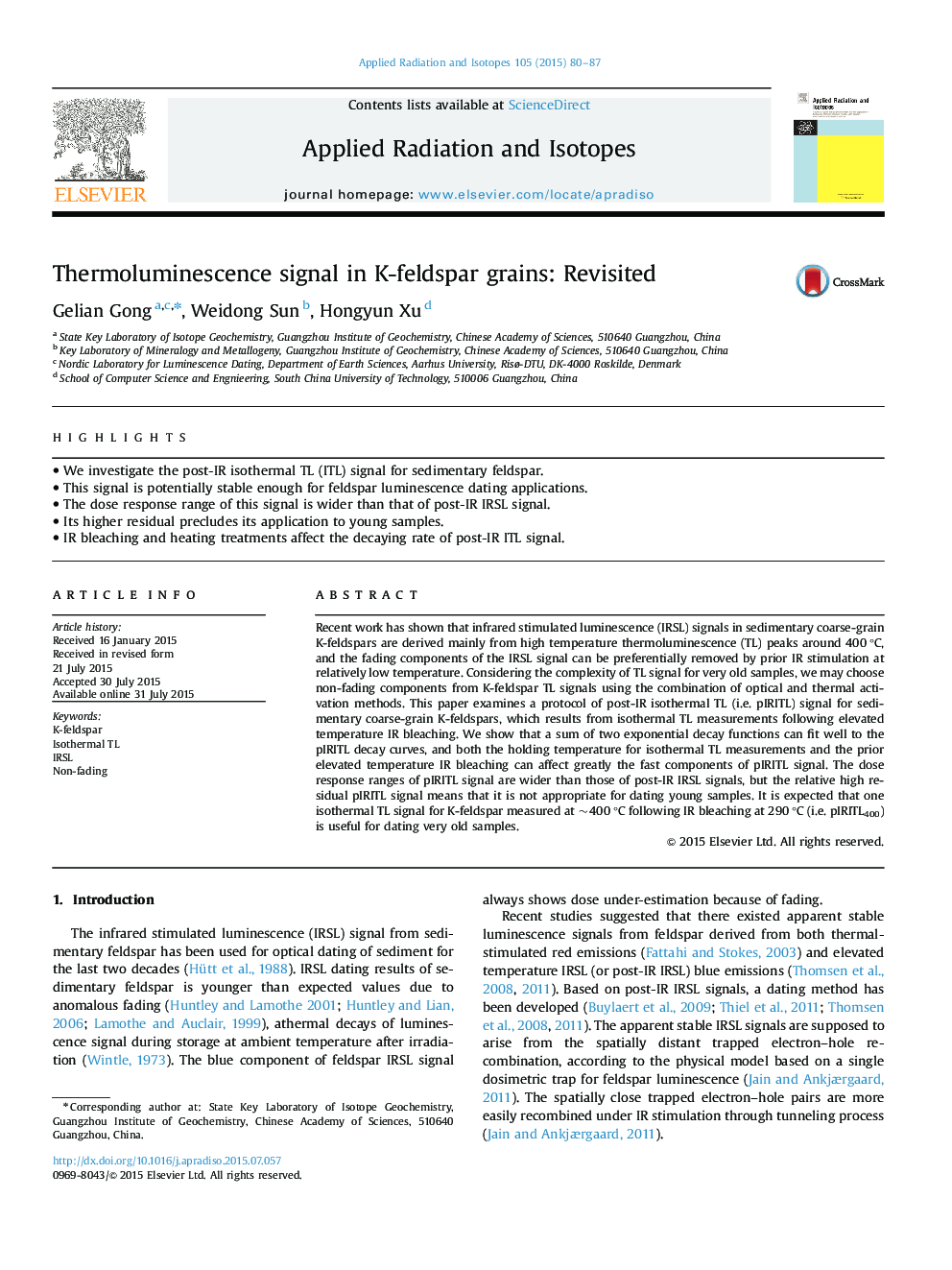| Article ID | Journal | Published Year | Pages | File Type |
|---|---|---|---|---|
| 1875818 | Applied Radiation and Isotopes | 2015 | 8 Pages |
•We investigate the post-IR isothermal TL (ITL) signal for sedimentary feldspar.•This signal is potentially stable enough for feldspar luminescence dating applications.•The dose response range of this signal is wider than that of post-IR IRSL signal.•Its higher residual precludes its application to young samples.•IR bleaching and heating treatments affect the decaying rate of post-IR ITL signal.
Recent work has shown that infrared stimulated luminescence (IRSL) signals in sedimentary coarse-grain K-feldspars are derived mainly from high temperature thermoluminescence (TL) peaks around 400 °C, and the fading components of the IRSL signal can be preferentially removed by prior IR stimulation at relatively low temperature. Considering the complexity of TL signal for very old samples, we may choose non-fading components from K-feldspar TL signals using the combination of optical and thermal activation methods. This paper examines a protocol of post-IR isothermal TL (i.e. pIRITL) signal for sedimentary coarse-grain K-feldspars, which results from isothermal TL measurements following elevated temperature IR bleaching. We show that a sum of two exponential decay functions can fit well to the pIRITL decay curves, and both the holding temperature for isothermal TL measurements and the prior elevated temperature IR bleaching can affect greatly the fast components of pIRITL signal. The dose response ranges of pIRITL signal are wider than those of post-IR IRSL signals, but the relative high residual pIRITL signal means that it is not appropriate for dating young samples. It is expected that one isothermal TL signal for K-feldspar measured at ~400 °C following IR bleaching at 290 °C (i.e. pIRITL400) is useful for dating very old samples.
